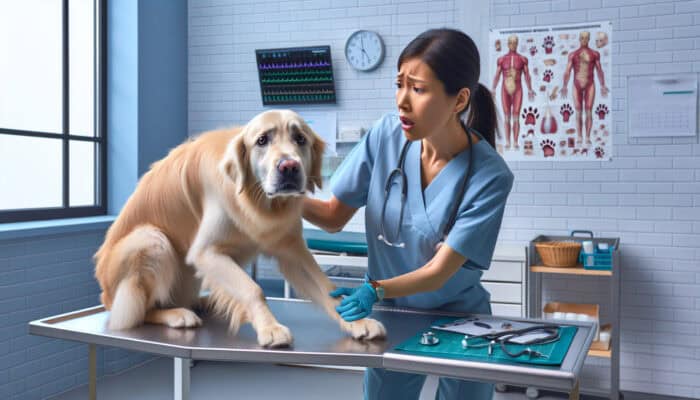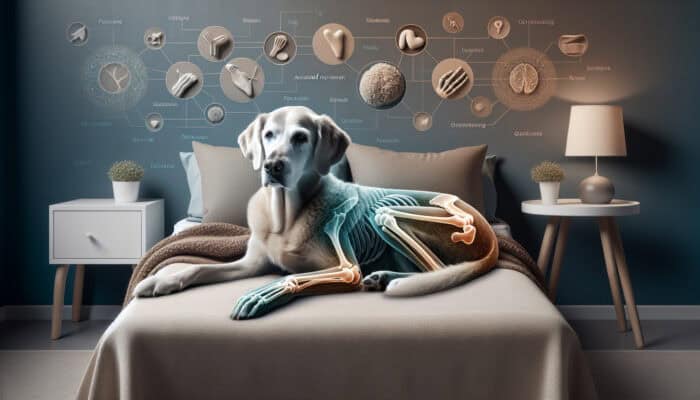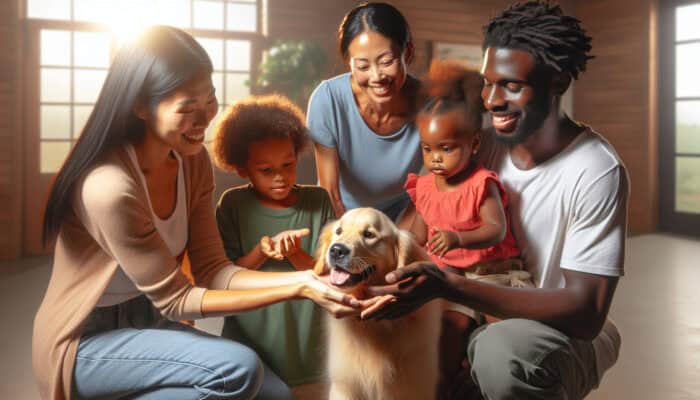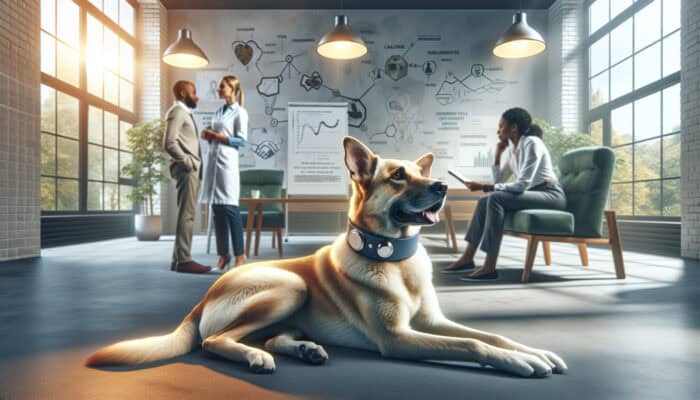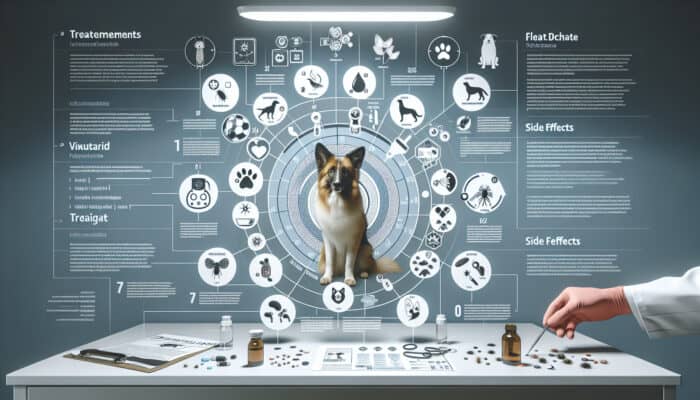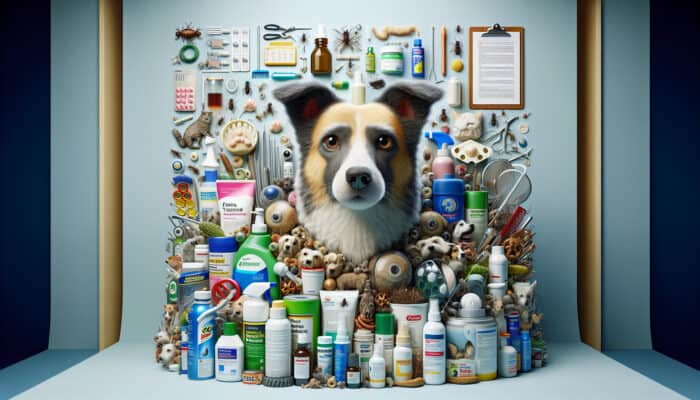Deepen Your Connection with Your Pet by Understanding Their Behavior
Identifying Essential Signs That Indicate Your Pet Feels Safe and Content
Enhancing the bond you share with your pet hinges significantly on your ability to decode their body language. When you welcome a new pet into your home, it’s crucial to monitor their comfort signals consistently. Look for indicators like a relaxed body stance, ears positioned neutrally, and a gentle gaze that reflects their comfort. A pet that feels secure may engage in playful behaviors such as wagging their tail or purring, which are clear signs of good emotional health. Actively participating with your pet during these relaxed moments promotes meaningful bonding experiences that can strengthen your relationship over time. By recognizing these cues, you not only enrich your interactions but also solidify your emotional connection with your beloved companion.
In addition to physical indicators, vocalizations serve as vital signs of your pet’s comfort level. Soft chirps or gentle whines typically accompany a relaxed state, suggesting your pet feels safe in their environment. To reinforce these positive signals, initiate soft interactions such as tender petting or engaging in playful activities. By positively responding to these cues, you lay a strong foundation for a lasting bond with your new companion, ensuring they feel loved and understood in your shared journey together.
Recognizing the Most Common Indicators That Your Pet Is Experiencing Stress
Understanding the sources of stress for your pet is essential for nurturing a strong bond. By recognizing the signs of stress, you can proactively create a more comforting and reassuring environment for your furry friend. Common indicators of stress include excessive panting, hiding, or cowering, which often signal underlying fear or anxiety. Overstimulation may cause pets to avoid eye contact or bark excessively, reflecting their discomfort or distress.
Be mindful of typical signs of stress, including:
- Excessive panting or drooling
- Hiding or seeking out solitary spaces
- Flattened ears or a tucked tail
- Avoidance of eye contact
- Aggressive or defensive behaviors
- Destructive actions like scratching or biting
- Excessive vocalization, including barking or whining
By being attentive to these stress indicators, you can quickly address potential issues. If you observe any of these signs, it is crucial to create a calming environment and ensure your pet has a secure space to retreat to. This proactive approach can lead to more positive bonding experiences and enhance your overall connection with your pet.
Implementing Effective Strategies to Encourage Positive Interactions with Your Pet
Creating a nurturing and inviting environment is essential for encouraging positive interactions with your new pet. This includes not only the physical space but also the emotional atmosphere you cultivate within it. Allow your pet to explore their surroundings at their own pace, as this autonomy is vital for building trust. Offering treats or engaging toys can further stimulate exploration and interaction, helping your pet feel more at ease in their new home.
Moreover, employing positive reinforcement techniques proves effective in promoting engagement. Each time your pet approaches or interacts positively, reward them with praise or a treat. This reinforces good behavior and helps them associate your presence with pleasurable experiences. Over time, these small acts of kindness will establish a robust foundation of trust and affection between you and your pet, significantly enhancing your relationship.
How to Effectively Tackle Common Behavioral Issues in Pets
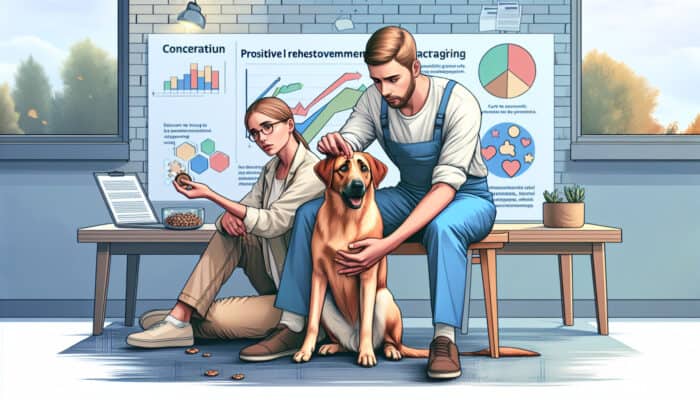
Addressing common behavioral challenges in pets, such as aggression or destructive tendencies, is essential for enhancing the bonding process. Recognizing these issues early on can greatly improve your pet’s overall well-being and the quality of your relationship with them. For instance, if your pet exhibits aggressive behavior, it may be rooted in fear or insecurity. Effectively managing such behaviors requires patience and understanding. Implement positive reinforcement strategies to encourage desirable actions while steering clear of punishment, as this can amplify fear-based responses and exacerbate the situation.
For pets displaying destructive behaviors, ensure they have access to various suitable toys and outlets for their energy. Regular playtime and physical activities can alleviate boredom, thus reducing destructive tendencies. If these issues persist, consulting with a pet behaviorist may provide valuable insights and solutions. By actively addressing behavioral challenges with compassion and care, you can significantly enhance your bonding experience, leading to a more harmonious relationship with your pet.
Mastering Effective Communication Techniques with Your Pet
Maximizing the Impact of Your Verbal Cues for Better Understanding
Utilizing verbal cues is a powerful strategy to enhance communication and understanding between you and your pet. Consistency is key; using the same tone and words for commands helps your pet better grasp your expectations. For example, a firm yet gentle command like “sit,” accompanied by a welcoming hand gesture, can assist your pet in associating the command with the desired action. Over time, they will not only understand the command but also attune to your emotional state, fostering a deeper bond and mutual comprehension.
When employing verbal cues, pay close attention to the tone of your voice. A soothing tone can provide reassurance to a nervous pet, while an enthusiastic voice can invigorate them during play. This form of communication strengthens the emotional connection, showcasing your engagement and attentiveness to their needs. Each interaction presents an opportunity to deepen your relationship through effective verbal communication, allowing both you and your pet to thrive together.
How Body Language Can Significantly Enrich Your Bonding Experience

Your body language plays an essential role in conveying safety and trust to your pet, facilitating a quicker bond. Open and calm postures, such as kneeling to their level or utilizing gentle hand gestures, signal to your pet that you are approachable. Avoid sudden movements that may startle them; instead, move slowly and deliberately. This creates a welcoming atmosphere of trust and comfort, allowing your pet to feel at ease in your presence.
Positive body language also involves maintaining eye contact, which can foster a sense of connection. However, be aware of your pet’s comfort level when making eye contact, as intense staring might be perceived as a threat. Instead, soften your gaze and blink slowly to express affection and trust. By becoming more conscious of your own body language, you can communicate more effectively and nurture a stronger bond with your new pet.
The Significance of Eye Contact in Enhancing Your Emotional Connection
Engaging in eye contact serves as a powerful method for building a connection with your pet, signaling to them that they have your full attention and care. When you maintain gentle eye contact, you convey to your pet that they are cherished and important. This can lead to positive associations, encouraging them to seek your presence and affection more often. The act of gazing into each other’s eyes can even trigger the release of oxytocin, the bonding hormone, in both you and your pet, significantly strengthening your emotional connection.
However, it is crucial to approach eye contact with caution. For some pets, especially those with timid or fearful backgrounds, direct eye contact may be intimidating. To foster trust, try softening your gaze and incorporating slow blinks, which can encourage your pet to reciprocate. This gentle approach allows your pet to feel safe and appreciated, thereby enriching the bonding experience over time.
Creating a Cozy and Comfortable Environment for Your Pet
Establishing a Safe and Secure Space for Your Pet’s Well-Being
Designing a safe haven for your pet is essential, providing them with a retreat when needed, which is crucial for nurturing your bond. This designated area should be quiet, comfortable, and away from the hustle and bustle of daily life. Consider placing their bed, favorite toys, and food in this space to create a sanctuary that your pet associates with comfort and security. This environment allows your new companion to explore their surroundings at their own pace, fostering a sense of safety and confidence.
Creating a secure environment extends beyond just physical space; it encompasses emotional well-being as well. Spend quality time with your pet in this safe area, engaging in gentle play or moments of quiet companionship. Allowing them the freedom to approach you on their terms helps establish trust and deepens your bond. The more secure your pet feels, the more open they will be to developing a meaningful relationship with you.
Identifying the Best Bedding Options for Your Pet’s Comfort
Selecting appropriate bedding can significantly enhance your pet’s comfort and sense of security, facilitating quicker bonding. Prioritize materials that promote warmth and coziness; many pets prefer soft, plush fabrics that cushion them as they relax. Consider beds with raised edges, providing a sense of security by mimicking the safety of a den, helping your pet feel more at ease.
Recommended bedding options include:
- Orthopedic beds for older pets
- Memory foam beds for added support
- Woven baskets with soft cushions
- Washable covers for easy maintenance
- Heated beds for extra warmth in colder climates
- Pet blankets for additional comfort
When selecting bedding, consider your pet’s size, age, and specific comfort needs. Providing a comfortable resting space promotes relaxation and security, ultimately fostering stronger bonds.
The Importance of Consistent Routines for Your Pet’s Emotional Well-Being
Establishing a consistent daily routine is essential for helping your pet feel secure in their new environment. A predictable schedule for feeding, walks, and playtime allows your pet to understand what to expect, reducing anxiety and fostering a sense of stability. This routine creates a framework within which your pet can thrive, knowing their needs will be met regularly and predictably.
Moreover, incorporating your pet into your daily activities can further enhance bonding. Whether it’s taking them for morning walks or including them in family gatherings, these shared experiences serve to strengthen your connection. As your pet becomes more accustomed to their routine, their trust in you will grow, leading to a deeper bond over time that enriches both your lives together.
Insights from Experts on Quickly Bonding with New Pets
How to Begin the Bonding Process According to Animal Behavior Experts
Experts suggest starting the bonding process through gentle interactions, allowing your pet to approach you at their own pace. This can involve softly speaking to them or offering treats as encouragement. An effective technique is to sit on the floor, creating a non-threatening atmosphere that invites your pet to come closer without feeling pressured or overwhelmed.
Real-world examples of successful bonding techniques include utilizing engaging toys and games that capture your pet’s interest. For instance, using a feather wand can stimulate a cat’s instincts, while playing fetch can energize a dog. These playful sessions not only provide necessary physical exercise but also strengthen trust and camaraderie between you and your pet.
Psychological Benefits of Bonding for Your Pet’s Mental Health
Fostering a bond can significantly enhance a pet’s mental health and overall well-being, resulting in a happier and more balanced companion. When pets feel secure in their relationships, they experience reduced anxiety and are less likely to exhibit behavioral problems. This emotional stability enables them to thrive in their new environment, leading to better interactions with both their human and animal companions.
Expert analysis reveals that pets who bond well with their owners show fewer signs of fear and aggression. They are also more likely to engage in playful behaviors, indicating a sense of joy and contentment. Investing time in building this bond benefits not only your pet’s happiness but also your long-term satisfaction as a pet owner, ensuring a harmonious and fulfilling relationship for both parties.
Effective Strategies for Cultivating Trust with Your Pet
Trust forms the foundation for bonding with a new pet, requiring patience, consistency, and empathy. One effective strategy is to establish a routine that includes regular playtime, feeding, and quiet moments together. These interactions create a predictable environment where your pet can feel safe and valued, laying the groundwork for a lasting relationship.
Another crucial strategy is to respect your pet’s need for space when they require it. Forcing interactions can lead to anxiety and resistance, hindering the trust-building process. Instead, allow your pet to approach you when they feel ready, reinforcing the idea that they control the pace of the relationship. By approaching trust-building with care and consideration, you can foster a strong and lasting bond over time.
Nurturing Your Bond for the Long Haul
Engaging in Regular Play and Exercise to Strengthen Your Connection
Consistent play and exercise are vital not only for your pet’s physical health but also serve as valuable opportunities to reinforce your bond. Participating in shared activities, such as fetching a ball or running in the park, creates positive experiences that enhance your connection. These moments of play generate lasting memories, reinforcing the idea that you are a source of joy and excitement in your pet’s life.
Furthermore, regular exercise helps alleviate stress and anxiety in pets, allowing them to feel more relaxed and secure in their environment. Aim to include a variety of activities tailored to your pet’s preferences, whether it involves agility training, swimming, or simple outdoor exploration. The more frequently you engage in these activities together, the more trust and affection you will cultivate, deepening your bond.
How Training Sessions Can Enhance Your Bonding Experience
Training can be an excellent avenue for strengthening your bond with your pet, as it inherently involves trust and communication. Utilizing positive reinforcement techniques, such as rewarding your pet with treats or praise for desired behaviors, fosters a strong connection based on mutual respect. Training sessions can become rewarding experiences for both of you, solidifying your roles as a cohesive team.
Training not only enhances your bond but also improves your pet’s behavior, making them a more enjoyable companion. Consider incorporating activities that promote engagement, such as agility courses or trick training. These experiences can deepen your connection while keeping your pet mentally stimulated. Here are some training tips that can enhance bonding:
- Consistently use positive reinforcement
- Keep training sessions brief and enjoyable
- Integrate play into training
- Exhibit patience and empathy during learning
- Celebrate small successes frequently
By prioritizing training as a bonding tool, you can create a deeper and more meaningful relationship with your pet, ensuring both of you enjoy this journey together.
Celebrating Milestones Together to Fortify Your Connection
Celebrating significant milestones in your pet’s life can greatly reinforce your bond, demonstrating to them that they are cherished and valued. Whether it’s their birthday, adoption anniversary, or achieving a training goal, these celebrations provide joyful opportunities for creating lasting memories together. Simple festivities, such as a special treat or a fun outing, can make your pet feel loved and appreciated.
Recognizing these moments not only fortifies your relationship but also reinforces positive behaviors. For example, if your pet successfully learns a new trick, celebrate this achievement with extra playtime or a special reward. By acknowledging their accomplishments, you create a positive association with learning and bonding experiences, turning these celebrations into an integral part of your shared journey that deepens your connection over time.
Ensuring Consistency in Your Pet’s Daily Routines for Stability
Establishing and maintaining daily routines is essential for helping your pet feel secure while also strengthening your bond through predictability and regular interaction. A consistent schedule for feeding, walks, and playtime fosters a sense of stability that is vital for your pet’s emotional health. This predictable structure enables your pet to understand what to expect, reducing anxiety and nurturing trust in your relationship.
To enhance this routine, incorporate small rituals that promote bonding, such as a morning cuddle session or an evening stroll. These shared moments create a sense of connection and familiarity, reinforcing the idea that you are a dependable presence in their life. Consistency combined with affection can transform daily routines into meaningful bonding experiences that enrich both your lives.
Overcoming Challenges in the Bonding Process
Strategies for Managing Initial Resistance from Your Pet
Some pets may exhibit resistance to bonding initially due to fear or past experiences. Patience and understanding their needs are crucial for overcoming this challenge. Allow your pet to set the pace for interactions, providing them with a safe space to retreat if they feel overwhelmed. This gentle approach helps build trust over time and encourages your pet to feel more comfortable around you.
To create a positive atmosphere, utilize calming scents, soft music, or low lighting to help ease your pet’s anxiety. Engage in quiet activities together, such as reading aloud or simply sitting nearby, allowing your pet to approach you on their own terms. Demonstrating empathy and understanding during this initial resistance can transform fear into trust, paving the way for a deeper bond.
What Steps Should You Take If Bonding Seems to Stall?
If bonding appears to stall, it is essential to reassess your approach and consider seeking professional help if necessary. Evaluate the environment to ensure it is conducive to bonding. Sometimes, simple adjustments, such as lowering noise levels or introducing new toys, can rekindle your pet’s interest and engagement.
Taking a step back can also be beneficial. Allow your pet some space to explore independently, then attempt to reintroduce activities that once sparked joy. Consistency and patience are paramount during this phase. If progress remains slow, consulting a professional trainer or behaviorist can provide valuable insights and strategies to effectively rejuvenate the bonding process.
Addressing Behavioral Issues to Enhance Your Bond with Your Pet
Behavioral issues such as anxiety or aggression can significantly impede the bonding process. Addressing these challenges with patience and training can improve your relationship with your pet. Start by identifying the root causes of these behaviors. For instance, an excessively barking dog may be seeking attention or expressing fear due to past experiences.
Utilizing positive reinforcement techniques can help redirect negative behaviors effectively. Rewarding calm behavior with treats or praise reinforces desired actions, helping your pet feel more confident in their interactions. Additionally, consider incorporating anxiety-reducing strategies, such as calming music or pheromone diffusers, to establish a more relaxed atmosphere. By addressing these behavioral issues with empathy and understanding, you can gradually strengthen your bond and enhance your relationship over time.
Understanding the Impact of Nutrition on Bonding
How Does Diet Affect Your Pet’s Behavior and Mood?
A balanced diet profoundly influences your pet’s mood and energy levels, which in turn affects how they bond with you. Nutritional deficiencies can lead to irritability or lethargy, making it difficult for your pet to engage positively with their environment. Ensuring your pet receives a well-rounded diet contributes significantly to their overall well-being and enhances their ability to form strong connections with you.
Consider the impact of nutrition on behavior; pets consuming high-quality diets tend to exhibit more stable moods and higher energy levels. This emotional stability can result in a more engaged and affectionate pet, facilitating stronger bonding experiences. Investing in your pet’s nutrition is a vital step in nurturing your relationship and ensuring long-term happiness.
Choosing the Right Food to Strengthen Your Bond with Your Pet
Selecting the appropriate food demonstrates your care for your pet’s health, ultimately strengthening your bond. High-quality, appropriate food tailored to your pet’s age, size, and specific needs is essential for their well-being. Whether you choose premium dry kibble or nutritious wet food, prioritize ingredients that promote health and vitality.
Engaging in mealtime rituals can also enhance bonding. For example, presenting food in a special dish or incorporating a unique feeding schedule can create positive associations. Your pet will learn to associate mealtime with care and attention, reinforcing the bond between you. A thoughtful approach to nutrition can enhance both your pet’s well-being and your connection with them, making every meal a bonding opportunity.
Transforming Feeding Time into a Meaningful Bonding Ritual
Transforming feeding time into a bonding ritual can foster positive associations and deepen your connection with your pet. Rather than simply placing food in a bowl, consider engaging your pet through interactive feeding methods, such as puzzle feeders or hand-feeding. These practices not only make mealtime enjoyable but also transform it into an opportunity for interaction and engagement.
Incorporating a routine around feeding can also enhance bonding. For instance, establishing a specific feeding schedule or offering treats at designated times of the day reinforces predictability, contributing to your pet’s sense of security. By making feeding a special time filled with attention and care, you nurture your bond daily, ensuring both you and your pet look forward to mealtimes.
The Role of Treats in Strengthening Your Bond
Utilizing treats as rewards can greatly enhance bonding by reinforcing positive behavior and creating joyful moments with your pet. Treats act as tokens of appreciation, signaling to your pet that they are valued and loved. Whether giving a small treat during training sessions or providing a favorite snack for good behavior, these gestures forge positive associations with your presence, making your pet feel cherished.
Choosing healthy treats that align with your pet’s dietary needs is essential. This ensures that while you reward them, you prioritize their overall health and well-being. Engaging in treat-sharing moments can be a delightful bonding experience, whether it’s a celebratory biscuit or a special homemade snack. The joy these moments bring can significantly strengthen your relationship, making every shared treat a step towards a deeper bond.
Addressing Nutritional Needs Throughout Different Life Stages
Understanding and meeting your pet’s changing nutritional requirements at various life stages is crucial for strengthening your bond. Puppies and kittens, for example, require nutrient-rich diets to support their growth and development, while older pets may need specialized diets to maintain their health and vitality. Addressing these dietary needs showcases your commitment to their well-being and fosters trust.
Consulting with a veterinarian can help you better understand the optimal nutritional choices for your pet. By adapting their diet as they age and their needs evolve, you create a relationship built on care and attentiveness. This thoughtful approach to nutrition not only nourishes your pet but also nurtures the emotional bond you share, enhancing your connection over time.
Long-Term Strategies for Fostering a Strong Bond
Maintaining Your Bond During Life Changes and Transitions
Life changes can significantly affect your bond with your pet, whether you move to a new home, welcome a new family member, or undergo shifts in your daily routine. Providing consistent care and attention during these transitions is crucial for maintaining your relationship. By offering reassurance and support, you help your pet navigate these changes confidently and securely.
Incorporating familiar routines can also ease transitions. For example, maintaining regular feeding times or play sessions can create a sense of normalcy. Your pet will appreciate the stability you provide during uncertain times, reinforcing their trust in you. By adapting to life changes together, you can strengthen your bond through shared experiences and resilience, ensuring you both emerge from these changes with a deeper connection.
How to Sustain the Bond Over Time Through Continuous Engagement
Maintaining a strong bond requires ongoing effort and adaptation to your pet’s evolving needs. Regularly engaging in activities that foster interaction, such as daily walks, playtime, or training sessions, cultivates a sense of connection. This ongoing engagement allows your pet to feel valued and loved, further strengthening your relationship over time.
Being attentive to your pet’s changing preferences and needs is also essential. As they grow and evolve, so too will their interests. Paying attention to these changes—whether it’s a newfound love for a specific toy or increased sensitivity to certain stimuli—demonstrates your commitment to their happiness. By remaining adaptable and engaged, you ensure that your bond remains strong throughout your journey together, enriching both your lives.
Planning Future Activities to Enhance Your Bond with Your Pet
Planning future activities can keep the bond alive and exciting for both you and your pet. Consider introducing new experiences that can enrich your pet’s life, such as exploring different parks, attending training classes, or participating in fun pet events. These activities not only provide variety but also create opportunities for shared joy and exploration, enhancing your connection.
Scheduling regular outings or adventures can also reinforce the idea that your pet is a priority in your life. Whether it’s a weekend trip or a daily stroll through the neighborhood, these shared experiences can deepen your bond and create lasting memories. As you explore new avenues together, your connection will flourish, enriching both of your lives and ensuring lasting companionship.
Frequently Asked Questions About Bonding with Pets
How long does it typically take to bond with a new pet?
Bonding with a new pet can take anywhere from a few days to several weeks, depending on their personality and past experiences. Patience and consistent interactions are essential for establishing a strong bond.
What actions should I take if my pet is fearful?
If your pet shows signs of fear, create a safe space for them and allow them to approach you at their own pace. Utilize soothing tones and gentle gestures to help them feel secure and at ease.
How can I determine if my pet trusts me?
Signs of trust include your pet actively seeking your company, relaxing in your presence, and engaging in playful or affectionate behaviors. These are positive indicators that your bond is strengthening.
Is it possible to bond with my pet through training?
Absolutely! Training sessions can enhance your bond by promoting communication and trust. Utilize positive reinforcement techniques to create a rewarding experience for both you and your pet.
What are some common signs that indicate a stressed pet?
Common signs include excessive panting, hiding, ear flattening, and avoidance of eye contact. Being observant of these signs allows you to address their needs effectively and promptly.
How do I create a safe space for my pet?
Design a safe space with comfortable bedding, engaging toys, and a calm environment. This area should provide your pet with a place to retreat and feel secure whenever they need comfort.
Why is routine important for pets?
Consistent routines provide a sense of stability and security for pets. Regular feeding, exercise, and playtimes help them understand their environment and minimize anxiety, fostering a positive relationship.
How can I celebrate my pet’s milestones?
Celebrate milestones with special treats, outings, or fun activities. Acknowledging these moments fosters a sense of value and strengthens your bond, enhancing your relationship over time.
What role does nutrition play in bonding with pets?
Nutrition significantly affects your pet’s behavior and mood. Providing a balanced diet helps ensure they feel good, which in turn enhances their ability to bond with you and engage positively.
What strategies can I use to maintain my bond over time?
Regular engagement in play, training, and shared activities helps sustain a strong bond. Staying attuned to your pet’s evolving needs also demonstrates your commitment to their happiness and well-being.
Connect with us on Facebook for more tips!
The Article Bonding Quickly With New Pets: Universal Tips First Published On https://elgatoencasa.com
The Article Quick Tips for Bonding With New Pets Was Found On https://limitsofstrategy.com

